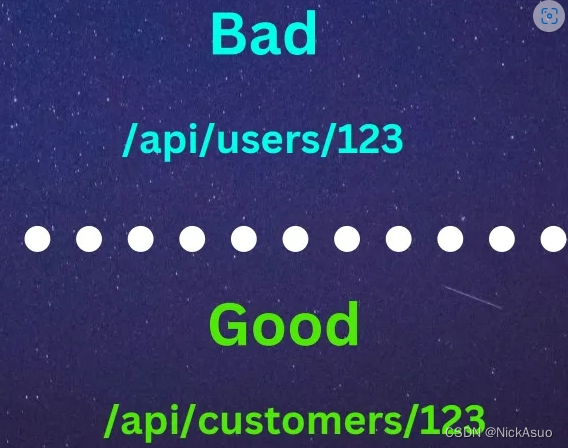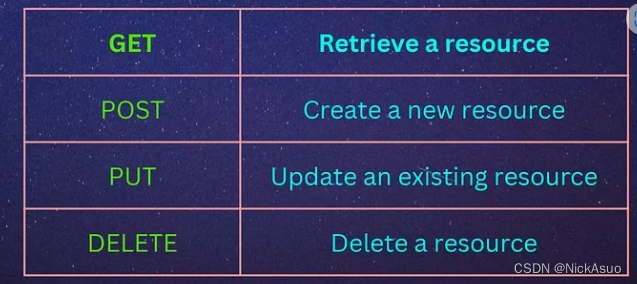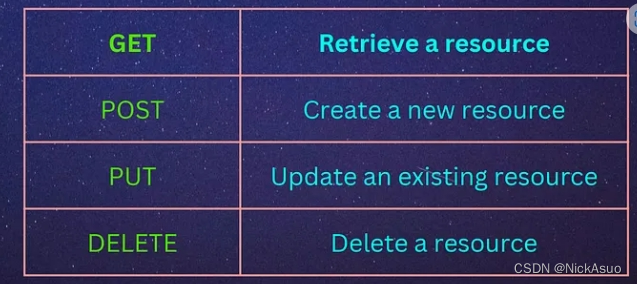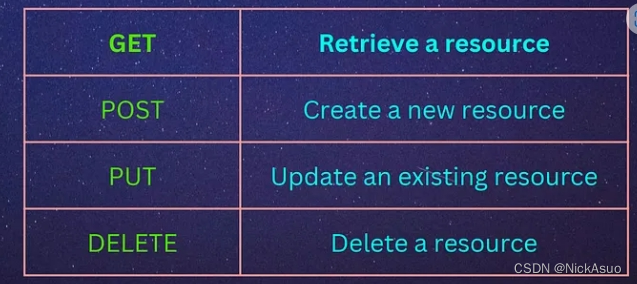10 REST API BEST PRACTICES
-
Use descriptive and meaningful resource names-
Instead of generic or ambiguous names, choose resource names that accurately represent the entities they represent.

-
Use HTTP methods correctly-
Use the appropriate HTTP methods (GET, POST, PUT, DELETE, PATCH, etc.) for different operations.

-
Version your APIs-
Use versioning to ensure backward compatibility and allow for future enhancements without breaking existing clients.

-
Use HTTP status codes correctly-
Return the appropriate HTTP status codes to indicate the success or failure of an API request.

-
Pick your JSON field naming convention (and stick to it)-
JSON standard doesn’t impose a field naming convention, but it’s a best practice to pick one and stick with it.

-
Use consistent error messages-
In most cases, HTTP status codes are not enough to explain what went wrong.
To help your API consumers, include a structured JSON error message.
The response should include the following information-
- Error code: A machine-readable error code that identifies the specific error condition.
- Error message: A human-readable message that provides a detailed explanation of the error.
- Error context: Additional information related to the error, such as the request ID, the request parameters that caused the error, or the field(s) in the request that caused the error.
- Error links: URLs to resources or documentation that provide additional information about the error and how it can be resolved.
- Timestamp: The time when the error occurred.
-
Use query parameters for filtering, sorting, and searching-
Query parameters allow you to provide additional information in the URL of an HTTP request to control the response returned by the server.

-
Implement authentication and authorization-
Secure your APIs by implementing proper authentication and authorization mechanisms.
-
=>USE API KEYS, TOKENS, OR OAUTH 2.0 FOR AUTHENTICATION
-
=>APPLY ROLE-BASED ACCESS CONTROL (RBAC) FOR AUTHORIZATION
- Do not maintain state-
-
A REST API should not maintain a state on the server. That’s the responsibility of the client.
-
This is important because it allows for the API to be cacheable, scalable, and decoupled from the client.
-
For example, an e-commerce API might use cookies to maintain the state of a shopping cart. However, such an approach violates key the key principle of RESTful APIs — they need to be stateless.
- Document your APIs-
Provide comprehensive documentation for your APIs, including endpoint details, request/response examples, and usage guidelines .
本文来自互联网用户投稿,该文观点仅代表作者本人,不代表本站立场。本站仅提供信息存储空间服务,不拥有所有权,不承担相关法律责任。 如若内容造成侵权/违法违规/事实不符,请联系我的编程经验分享网邮箱:chenni525@qq.com进行投诉反馈,一经查实,立即删除!
- Python教程
- 深入理解 MySQL 中的 HAVING 关键字和聚合函数
- Qt之QChar编码(1)
- MyBatis入门基础篇
- 用Python脚本实现FFmpeg批量转换
- 前端发开的性能优化 请求级:请求前(资源预加载和预读取)
- 染色法判定二分图
- Python:Anaconda
- 基于ubuntu的linux和shell脚本的学习,以及SSH远程登陆实战
- 如何编写项目交接文档
- YoloV8改进策略:自研频域和空间注意力,超越GAM,CBAM等注意力|注意力创新改进|高效涨点|代码注释与改进|包括改进后的结构图
- 136 二叉树的最近公共祖先
- React 组件生命周期
- 一、电脑重装[原版、PE]
- ArrayBlockingQueue 源码分析